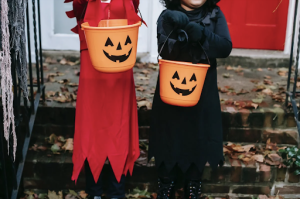The History of Horror Icons
February 7, 2023
With the passing of Halloween, it was exciting to see the creative costumes people came up with. While some dressed up as characters from television shows or movies, others decided to go with the classics. You might be wondering where many of the recognizable monsters that are known all around the world came from. Each has its own unique origin story, and rise to popularity.

A mythological creature with a hunger for blood, the vampire has influenced literature and film all over. Elliot Goss, a senior, when asked where he thought vampires came from said, “Uh… Transylvania?” While many believe vampires originated in Eastern Europe, they actually have roots in ancient Egypt. Sekhmet, the daughter of Ra, was a feline warrior associated with plague and healing. In early stories, she is described as having an obsession with drinking blood and wanting to punish humankind for their disobedience. In Jewish folklore, a woman named Lilith was known as a demon in ancient Babylonia. Lilitu, a word named after Lilith, was used to describe people who were hungry for human victims. Bram Stoker’s Dracula established the mistaken notion that vampires originated in Europe. The book takes place in Transylvania, Romania, and is about a tall, pale, thin man with a long mustache. Dracula can shape-shift into different forms, has extreme physical strength, and controls nocturnal animals. Many of these attributes contributed to the modern idea of vampires.
The zombie, an internationally known horror icon, surprisingly was born from Haitian folklore. Haiti, an island in the Caribbean, first described zombies as a product of spells by a voodoo sorcerer called Borkor. With the harsh environment involved with the Haitian slave trade, many Haitians began telling stories and using West African fables as a mental escape from their brutal treatment. In 1872, scholar and author Maximilian Schele de Vere defined a zombi (the e was added later) as some sort of phantom creature. In the early 1900s with the expansion of the film industry, zombies became the focal point. The creation of the film, White Zombie, by director Victor Halperin, influenced most films to show zombies as white people.
Ghost stories have been around for thousands of years, and have come in all different genres. Zechariah Zaczkiewicz, a sophomore, when asked where he has seen ghosts the most in pop culture said, “I’d probably say the movies.” Ghost stories were first documented in Roman literature, with stories of people encountering spirits and haunted homes. Many of the early stories described that ghosts did not inflict pain on anyone, and haunted people for reasons including not burying them correctly or respecting them after death. Gothic writers took on this idea and made ghost stories more grim and ghoulish. These gothic tales are still utilized today as a guide when developing cinema plots.
Stepping back, it’s remarkable to see how many of these tales come from a fear of dying. All three types of monsters—zombies, vampires, and ghosts—involve some sort of death, whether it’s a haunting from the afterlife or a return to destroy humanity. Paul Patterson, an English professor at Saint Joseph’s University describes this phenomenon by saying, “The fear of death. It’s so completely human, it transcends all of time.”



